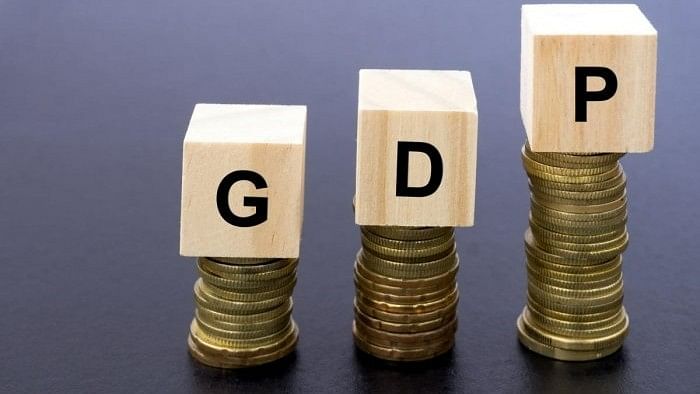
Representative image of GDP.
Credit: iStock Photo
Mumbai: India's third-quarter gross domestic product (GDP), which rose by a stronger-than-expected 8.4 per cent compared to a year ago, may be overstating growth, economists said, pointing to a more modest increase in gross value added in the economy.
Alongside GDP, the government's statistical office releases data for gross value added (GVA), which is a measure of total value of goods and services produced in the economy.
GVA is seen as a purer measure of economic growth as the computation of GDP includes indirect taxes and excludes government subsidies.
For the third quarter, GVA grew at 6.5 per cent compared to the 8.4 per cent GDP growth.
"The above-8 per cent real GDP print should be read with caution given the large gap with GVA, decline in agriculture activity and two-paced economic growth (investment far outpacing consumption)," Citi economist Samiran Chakraborty said in a note on Thursday.
The gap is likely explained by rising tax collections and a fall in government subsidies during the quarter, they said. The divergence is at a 10-year high, said Neelkanth Mishra, chief economist at Axis Bank.
"We don't expect divergences of similar magnitude to arise in 2024-25, said Mishra, who expects the Indian economy to grow at 6.5 per cent in the next financial year, compared to the 7.6 per cent for the year ending March 31, 2024," pointed Mishra.
The full-year growth projected by the statistical office also suggests that the economy will grow at 5.9 per cent in the January-March 2024 quarter, which Citi's Chakraborty said is conservative.
INVESTMENT OVER CONSUMPTION
Underlying growth continues to be led by investment, which grew at 10.6 per cent on-year in the third quarter, led by government spending and residential real estate.
Consumption lagged with just a 3.5 per cent increase, below the broader economy.
"Although a pickup in private consumption was anticipated, owing to the festive season buoyancy that proxy indicators had pointed towards, the extent of upside was underwhelming for sure," said Yuvika Singhal, economist at QuantEco Research.